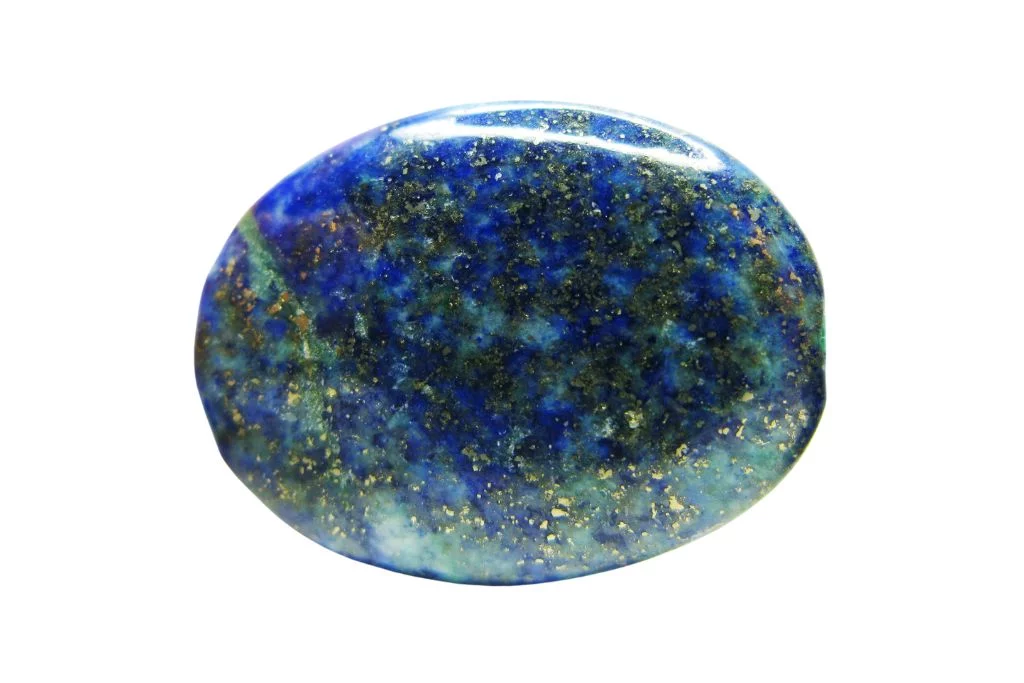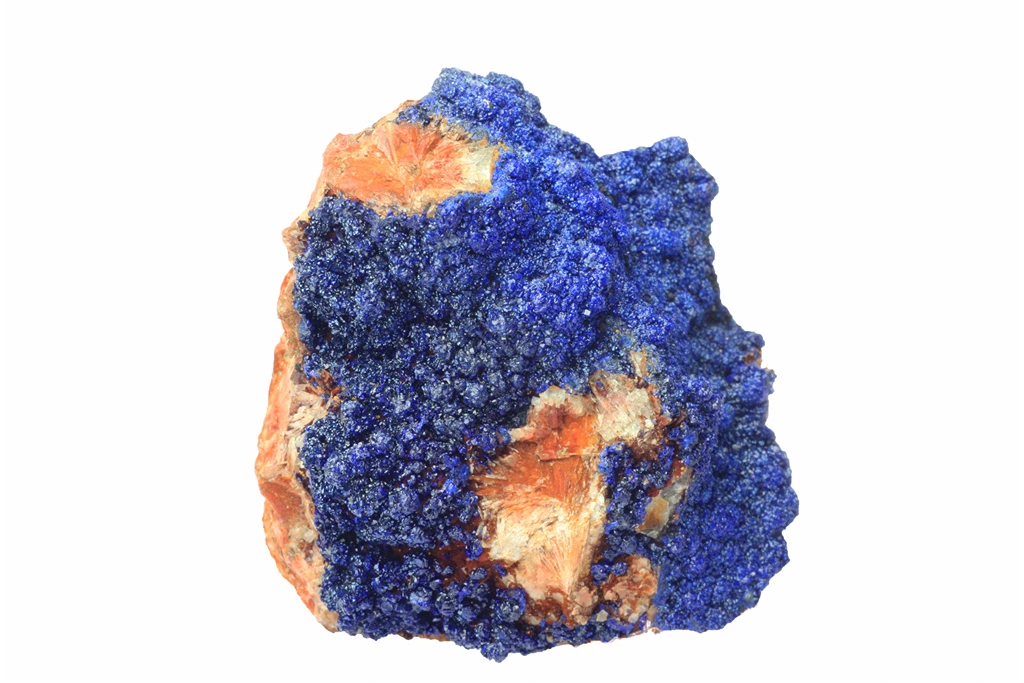Color and Appearance of Azurite
Azurite is renowned for its striking deep blue color, which ranges from a rich azure to a deep indigo. This vibrant hue is the result of copper carbonate hydroxide in its chemical composition. The intensity of the blue can vary depending on the crystal’s formation and purity, with some specimens displaying an almost electric blue appearance.
Crystal Structure and Form
Azurite typically forms in monoclinic crystal systems, often creating prismatic or tabular crystals. These crystals can range from small, needle-like formations to larger, well-defined shapes. One of the most distinctive features of azurite is its tendency to form rosette-like clusters, where multiple crystals radiate outward from a central point, creating a flower-like appearance.
Unique Characteristics
What makes azurite stand out is its frequent association with malachite, another copper-based mineral. This combination can result in stunning specimens where the deep blue of azurite is interspersed with the vibrant green of malachite, creating a visually captivating contrast. Additionally, azurite often exhibits a vitreous to sub-adamantine luster, giving it a glass-like shine that enhances its overall beauty.
Physical Properties
Azurite has a relatively low hardness on the Mohs scale, typically ranging from 3.5 to 4. This softness contributes to its brittleness and makes it less suitable for everyday wear in jewelry. However, it also allows for easier carving and shaping, making azurite popular among mineral collectors and for use in ornamental objects. The crystal’s streak, or the color it leaves when scratched against a white surface, is a lighter blue than its body color, which is another distinguishing characteristic.
Historical and Cultural Significance of Azurite
Azurite, a deep blue copper mineral, has been prized for centuries across various cultures. Ancient Egyptians used it in jewelry and as a pigment in their iconic blue paints. In medieval Europe, azurite was ground into a powder to create vibrant blue pigments for illuminated manuscripts and paintings. The stone’s rich color has long been associated with royalty and spiritual insight.
Metaphysical Associations
In the realm of crystal healing and metaphysics, azurite is believed to be a powerful stone for mental and spiritual development. It is said to enhance intuition, stimulate the third eye chakra, and facilitate communication with higher realms. Many practitioners use azurite for meditation, claiming it helps to clear the mind and access deeper states of consciousness.
Common Uses and Benefits
Today, azurite continues to be used in jewelry and decorative objects, valued for its striking blue color. In alternative medicine, it is often employed to alleviate stress, reduce inflammation, and improve circulation. Some believe that azurite can help with memory retention and mental clarity, making it popular among students and professionals. The stone is also used in energy healing practices, where it is thought to align the chakras and promote overall well-being.
Modern Applications
In addition to its traditional uses, azurite has found applications in modern technology. Its unique properties make it useful in certain scientific instruments and as a minor ore of copper. Some environmentalists also use azurite as an indicator of copper deposits in soil, aiding in the detection of potential contamination. As interest in natural remedies grows, azurite continues to gain popularity in holistic health circles for its purported healing properties.


